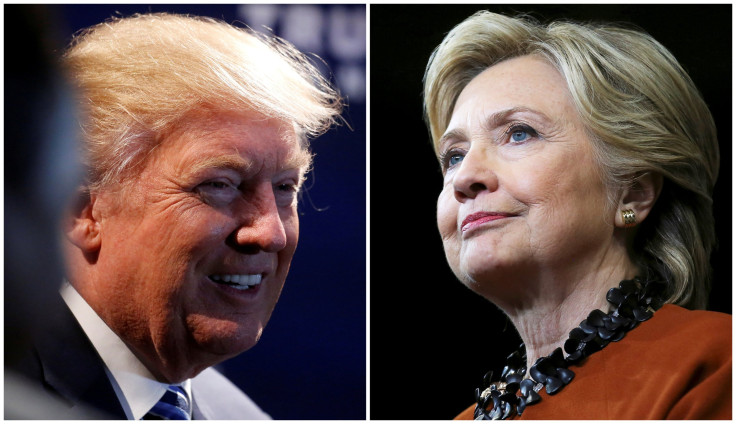Clinton, Trump Latest Polls: Swing States In Play in A 4-Way Race With Gary Johnson, Jill Stein

With the election four days away and Hillary Clinton’s lead over Donald Trump down to less than 3 points, attention has centered on 11 swing states. There is also renewed discussion on the impact of third-party candidates Gary Johnson and Jill Stein, who could pull votes from their Republican and Democratic opponents.
Polls in Florida, with a highly coveted 29 electoral votes, showed Clinton just barely edging out Trump. A four-way RealClearPolitics (RCP) average of statewide data gave her 47.4 percent, less than 1 point above Trump’s 46.2 percent. While Clinton’s lead is narrow, it’s an improvement over her slight dip in average state polling last weekend, when she trailed him by just under 1 point.
How third-party candidates fare in Florida is particularly noteworthy given the state's magnitude in the general election. Johnson, the Libertarian nominee, who is on the ballot in all 50 states, polled at 2.4 percent in Florida. Stein, the Green Party nominee, who is on 44 state ballots and a write-in for three states, is lagging in Florida, at just 1.3 percent.
Pennsylvania, a state with 20 electoral votes that has voted for the Democratic nominee in every election since 1992, remains hotly contested in the final week, with Melania Trump making a rare campaign speech there on Thursday, and Clinton holding a rally there on Friday. But Clinton has enjoyed a comfortable lead in nearly every poll in recent months. Both Johnson and Stein have polled at 3 percent or less in the five most recent polls.
Recent polls in Ohio, arguably the most contentious state given its past importance in electing presidents, have Trump leading Clinton by 5 points in a four-way race. Johnson polled as high as 14 percent there in August, but has more recently seen his poll numbers dip to 5 percent, while Stein received 2 percent, according to a Quinnipiac University poll.
Trump has gained ground on Clinton in North Carolina, a state with 15 electoral votes, in two recent polls, with leads of 7 points and 2 points in a three-way race. But Clinton has 3-point leads in two more respected polls, Quinnipiac University and CBS News/YouGov, and has consistently polled stronger than Trump in recent months. Johnson has the opportunity to play spoiler in the Tar Heel state, with poll numbers have reached as a high as 9 percent in October.
Out west, Trump has maintained a lead over Clinton in Arizona. Polls by NBC/Wall Street Journal/Marist College and CNN/ORC International each had Trump with a 5-point edge. Johnson, the former governor of New Mexico, has polled as high as 12 percent but has seen his numbers dip in recent weeks. Stein polled at 3 percent in the NBC/WSJ/Marist poll.
Though neither Johnson nor Stein will claim a victory on Nov. 8, they do stand to sway the election out of Clinton’s favor, according to analysis by FiveThirtyEight.
Johnson has performed well in key states, which include Iowa (6.3 percent), Colorado (6.2 percent), New Hampshire (6 percent) and Nevada (5 percent), perhaps presenting an obstacle for the Clinton campaign.
© Copyright IBTimes 2025. All rights reserved.






















